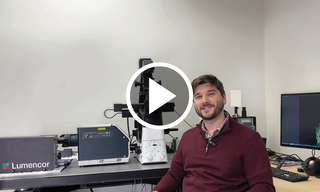Arguably more than any other element in the analysis, the nature of the light employed for imaging, as characterized by its brightness, stability, and consistency, defines the image quality in light microscopy. The degree to which an optical imaging system performs, as reflected in the key figures of merit (sensitivity, contrast, dynamic range, etc.) is inextricably qualified by the nature of the light used for imaging. Efforts to improve increasingly complex biological data collection must carefully consider the performance and precision of the illumination.
To that end, QUAREP-LiMi (Quality Assessment and Reproducibility for Instruments & Images in Light Microscopy) works to assist the light microscopy community by "establishing a recommended protocol for measuring the stability of a light source during both short- and long-term image acquisition sessions…” [1]. Since not all lasers are the same, the protocols to define and characterize their behavior must consider both the nature of the laser illumination itself and the experimental parameters to which the lasers are dedicated for support.
In this video, Dr. Andrii Repula, discusses Lumencor’s latest White Paper "Laser Light Engine Output Stability." The White Paper tests the laser-based CELESTA Light Engine for consistency, power, and stability using continuous wave illumination, pulsed illumination, and time-lapse imaging. Understanding both the performance capabilities and limitations of CELESTA, Lumencor’s turn-key laser Light Engine, will foster operating conditions that best suit the user’s experimental needs.
- Feb 22, 2024



